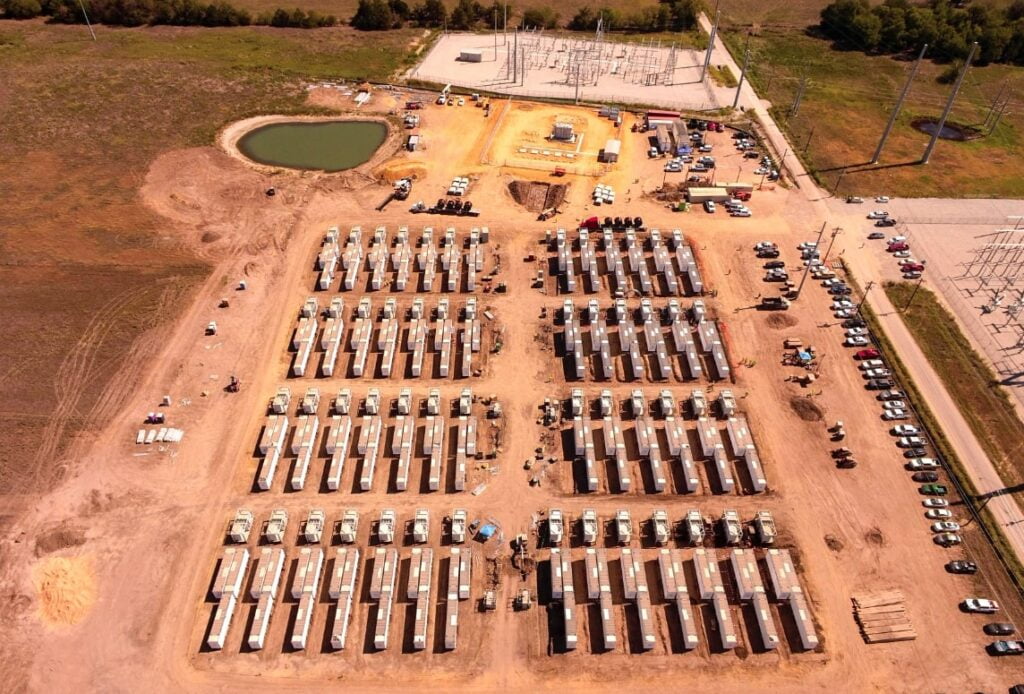Second life EV batteries stored at Element Energy’s Kentucky warehouse. The firm has secured 2.5GWh of modules. Image: Element Energy.
California-based firm Element Energy has raised a US$28 million Series B to accelerate its proprietary BMS-enhanced second life energy storage solution, with 2.5GWh of modules secured already.
The firm has completed the first close of a US$28 million fundraising round, led by technology-focused venture capital (VC) firm Cohort Ventures. The round also saw participation from existing backers including utility Edison International, LG Technology Ventures, the investment arm of the South Korean electronics giant, and VC firms Prelude Ventures and Radar Partners.
Founded in 2019, Element Energy has created what it calls an ‘adaptive’ battery management system (BMS) to provide monitoring, diagnostics, predictive intelligence and distributed control of large-scale battery systems, reducing in improved performance, safety and cost competitiveness.
Its precedent IP is a decade and US$30-40 million of investment in the making, CEO Tony Stratakos said.
“Our BMS distributes control down to the module level versus conventional BMS which is highly centralised. This means we can seamlessly combine modules of different chemistries and states of health with no negative impact on performance from limitations of weaker modules on stronger modules in the same system,” he told Energy-Storage.news.
“We’re a broad-based technology supplier with second life energy storage being one of three focuses – ‘conventional’ first life storage and EVs being the others – but second life is obviously an area we can capitalise on thanks to our BMS.”
The funding will be used to continue investments in its asset, logistics and infrastructure for upcoming utility-scale deployments using second life EV batteries. The company has procured over 2.5GWh of second life EV batteries of which a third to half is already sitting in its warehouse in Kentucky (pictured above), Stratakos said, though he wouldn’t give details on which OEMs the modules are from.
The figure eclipses that of any other second life firm Energy-Storage.news has interviewed and the projects it is deploying are larger than any we’ve come across outside China. The firm is delivering a 50MWh project for NextEra at a wind farm, for which it received US$7.9 million from the Department of Energy, and Stratakos said that it will deploy 100-400MWh systems at a time, starting next year.
The firm’s energy storage solution. Image: Element Energy.
Matt Murphy, president and CEO of the US$40 billion market cap, Nasdaq-listed semiconductor technology company Marvell, has also joined Element’s board of directors.
“Element Energy has created the battery management hardware and software needed to enable efficient battery reuse at scale, and provide affordable, clean electricity for a broad range of energy storage and EV applications,” Murphy said.
Our sister site PV Tech Power published a special feature looking at the second life energy storage sector in the latest edition of PV Tech Power, its quarterly downstream-focused journal. Read all of Energy-Storage.news‘ recent coverage of developments in the sector here.
Energy-Storage.news’ publisher Solar Media will host the 5th Energy Storage Summit USA, 28-29 March 2023 in Austin, Texas. Featuring a packed programme of panels, presentations and fireside chats from industry leaders focusing on accelerating the market for energy storage across the country. For more information, go to the website.
Continue reading










